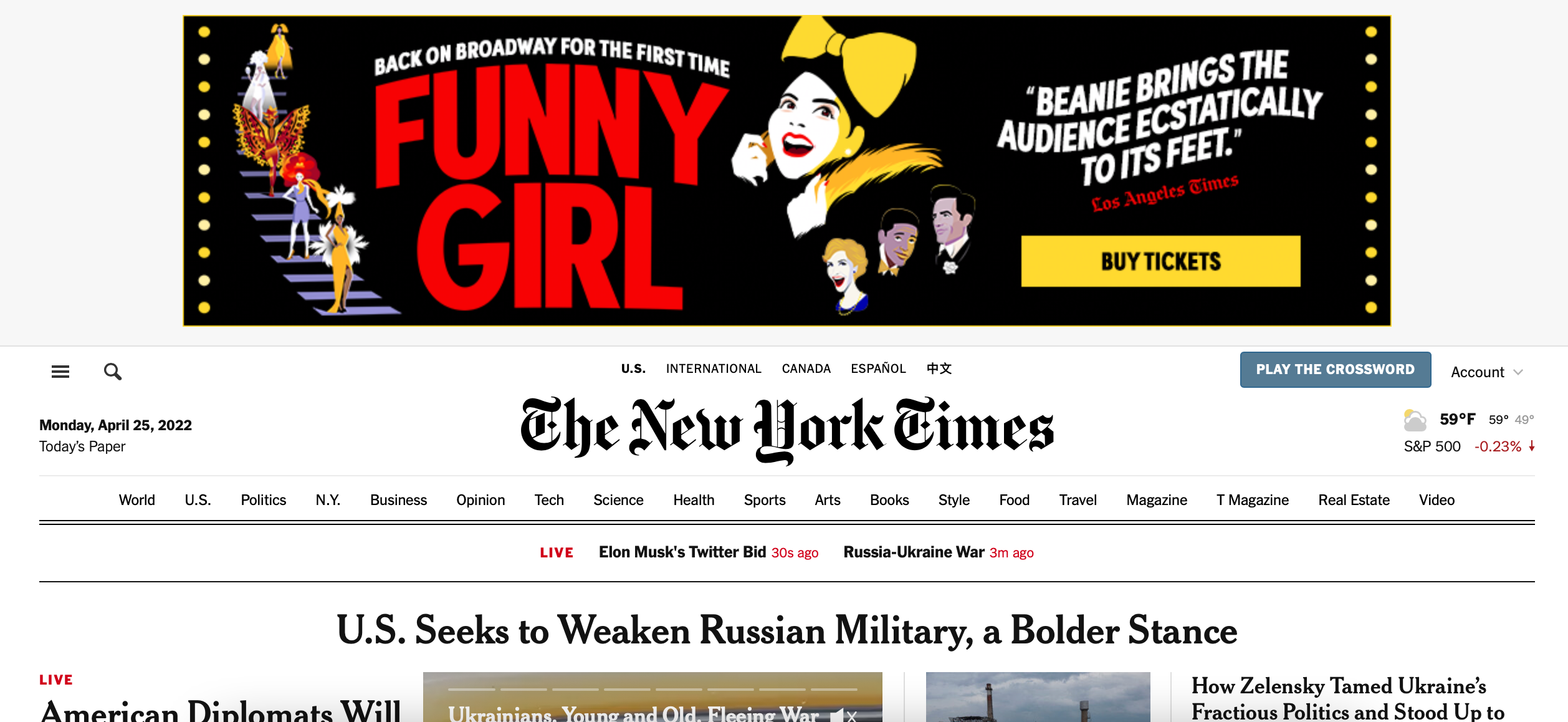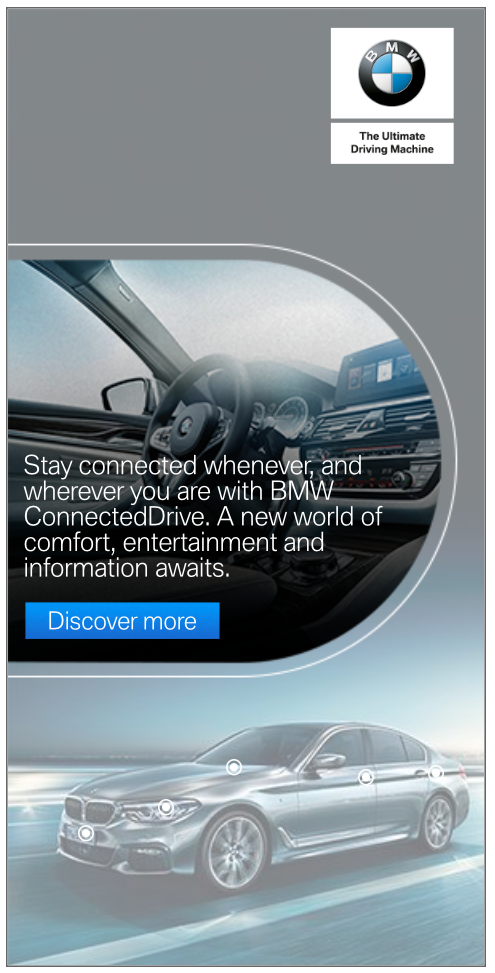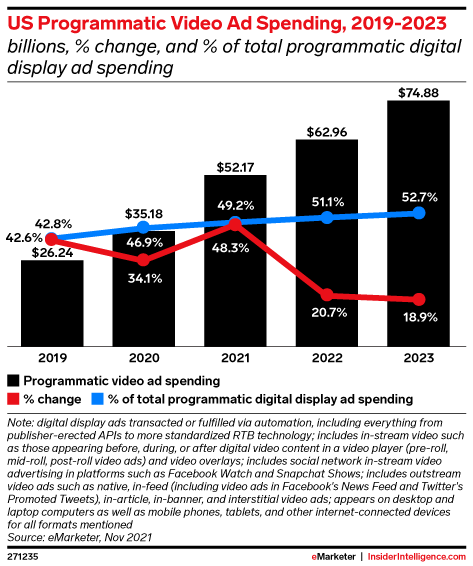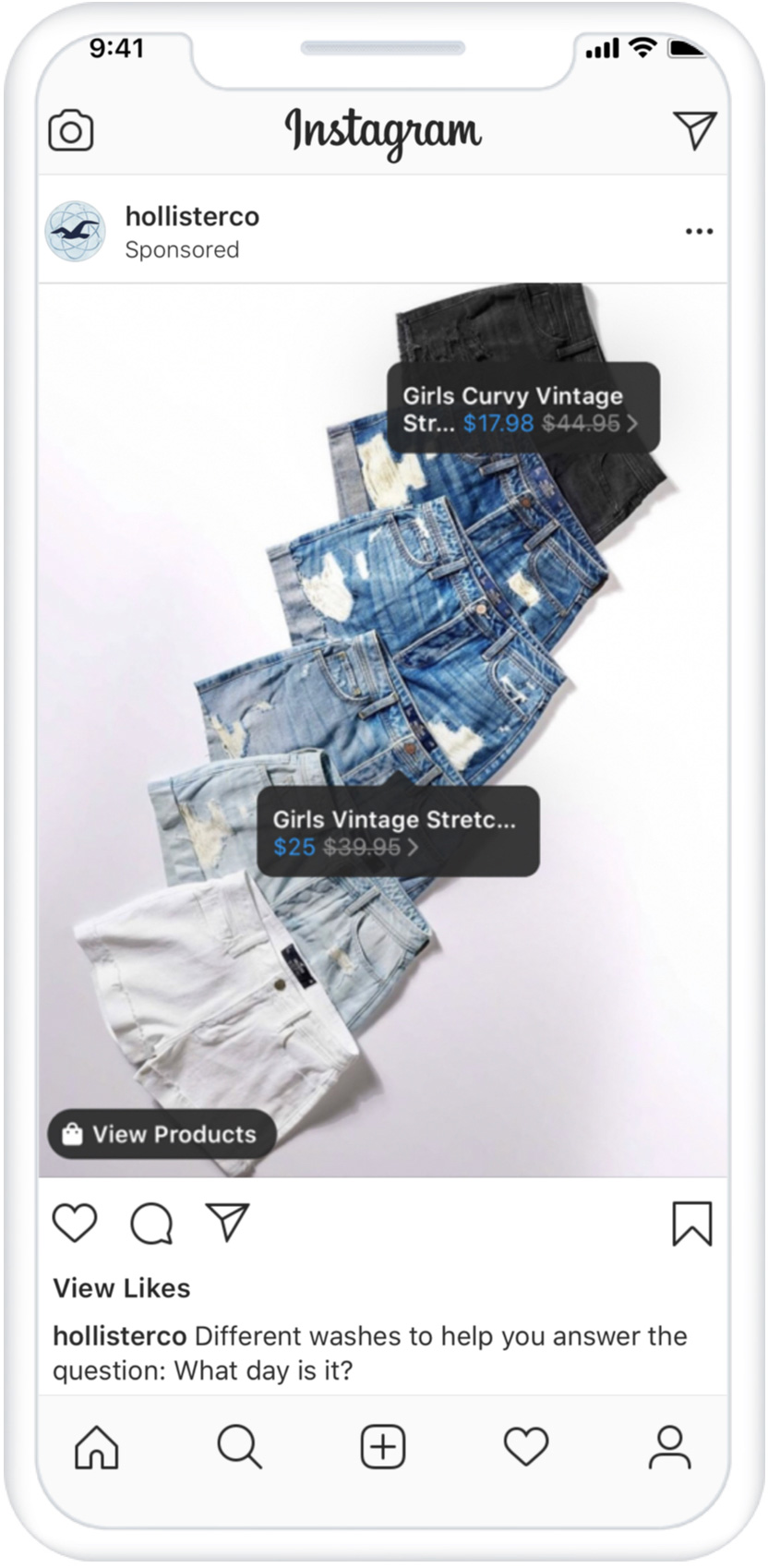It’s been almost thirty years since the first banner ad appeared on the web…and yet, there’s often still confusion when it comes to display ads. That’s largely because display advertising continues to evolve. Over the past three decades, we’ve seen banners grow from pixelated rectangles to interactive and video ads on every digital platform imaginable.
What is display advertising?
At its core, display advertising is visual messaging featuring text, imagery, and a URL that’s designed to engage consumers and incite an action. It can be static or animated, can take the form of banners, video ads, mobile ads, and page takeovers, and can be used for everything from selling products to driving traffic to a landing page. According to eMarketer, display advertising is “one of the most effective ways to engage audiences,” and research shows that digital display ad spending in the US topped 92 billion in 2021.
Let’s take a closer look at display advertising, its advantages to advertisers, and how to ensure your display ads are as effective as possible.
Types of display ads and their uses
Display advertising has something for everyone, regardless of your campaign goals. These ads come in multiple formats and sizes to meet the needs of your display advertising agency. What are the different types of display ads? Read on to learn about each type.
1
Banner ads: The standard banner ad—a direct descendent of the first banner released back in 1994—is fairly simple in nature: it can be static or animated, is clickable, and generally includes a prominent call-to-action.
A banner can be used to promote a product or service, so whether you’re selling theater tickets or looking to grow your lawn care business, banner ads can be useful tools. The original banner ad was 468×60, but today’s banners come in a variety of sizes as defined by the IAB (Interactive Advertising Bureau). These range from 970×250 billboard ads to 160×600 vertical skyscrapers, 120×20 mobile ads, and others.
Via NYTimes.com
2
Native ads: Native advertising is a more subtle form of banner advertising that plays into consumers’ loyalty to the sites they spend time on. While some native ads—such as the kind you see in a social feed, or at the bottom of an online article like this one—still have the appearance of a banner ad, others are even more integrated into the site environment and editorial content. For brands that want to align themselves with a beloved site or publisher, native advertising is an attractive option.
Display ads vs. native ads
Unlike classic banner ads, which are intended to have a prominent placement on the page, native ads are designed to blend into the website on which they appear. Their placement is generally much more seamless than banners, which can lead users to assume there’s some connection between the publisher and the advertising brand.
Pros and cons of native ads
Because native ads can look so much like editorial content, consumers are sometimes fooled into believing they’re one and the same. This has led to some consumer backlash, so it’s important that brands always clearly identify their advertising as sponsored content so as to avoid making consumers feel misled or duped.
3
GIF ads: Like standard banner ads, GIF banners deliver a visual and text-based message and can be either static or animated. Because they use a .GIF extension, which is a smaller file size, they’re especially useful for advertising in emails, as they don’t take as long to load as a traditional banner ad.
You’ll find examples of GIF ads here, some of which include video loops to boost engagement. These types of ads are good at catching a consumer’s eye, particularly when they’re placed within a social fee, and can be an effective tool both for increasing awareness and for driving traffic.
4
Interactive ads: As its name suggests, interactive advertising encompasses all forms of digital advertising that invite consumers to interact with the ad itself. Banners that feature games, polls, forms, and augmented reality all fall into this category of ads.
This type of banner is designed to boost engagement by encouraging site users to complete an action within the ad that leads them to spend more time with the brand. It’s also a valuable format for brands that need to squeeze a lot of content into their creative. An interactive banner might ask a user to input information, play a digital game, or scroll over a hot spot to reveal more content, as in the example below.
Via The Bannerman
5
Video ads: If you’ve ever watched a video online, you’ve been exposed to a video ad. Much like TV commercials, these ads exist within the video content, usually appearing before the content itself, throughout the programming, or between video views. Video ads frequently include a clickable banner or link that viewers can follow to learn more about the product.
Via YouTube
Video ads have a wide variety of uses, and can be employed for anything from boosting awareness of your brand to generating interest in a new product. In 2023, US marketers are expected to spend more on programmatic digital video ads—online video ads purchased and delivered via programmatic marketing—than on traditional TV advertising.
Graph of US Programmatic Video Ad Spending from 2019-2023
6
Expandable ads: Back in the early days of banner advertising, marketers often struggled to fit their desired ad message into standard-sized banners. When a user clicks on an expandable ad, it expands to cover more of the site page, thus enlarging the amount of ad space brands have to work with.
Expandable banners allow brands to showcase additional product or service information, and were popular among automotive marketers and tech brands that wanted to include specs and other product details within the display ad itself. If you want to present product information without overwhelming a consumer, expandable ads are for you.
7
Interstitial ads: Popularized back in the 2000s, interstitial ads initially appeared when a user arrived on a site, temporarily taking over all or part of the page. Today, they’re more frequently found on mobile apps, where they can appear when users are transitioning from one activity or game level to another.
These ads can be interactive, inviting consumers to complete an action, but they can also be perceived as intrusive, so use them sparingly to preserve the integrity of your brand.
8
Shoppable ads: Recently, platforms like Facebook, Instagram, and Pinterest have introduced shoppable online display advertising that allows consumers to browse products and make purchases within the ad itself. The idea behind this format is to streamline the purchase experience to save consumers the step of having to click-through to an e-commerce site. Instead, they can buy what they need on the spot without even having to leave the site they’re currently visiting.
These ads can be very effective when your campaign goals include boosting product sales, or when you’re promoting a limited-time offer. Because they shorten the path to purchase, they can help brands secure sales more quickly while simplifying the shopping experience for consumers.
Measuring display ad performance
No display ad campaign would be complete without a strategy for measuring ad performance. It’s important for marketers to track the effectiveness of their display ads so that they can gauge consumer response and optimize accordingly.
How can you measure display ad performance?
By analyzing your volume of ad impressions (the number of times your ad is viewed) and engagement metrics that range from clicks to completed video views, you can determine how effective your ad has been at meeting your campaign goals. It’s important to track your conversion rates—number of conversions, divided by number of total ad interactions—as well.
There’s no ideal click-through rate for a display ad, given that ad objectives and formats can vary so dramatically, but your advertising partner can help you determine how well your ads are doing, and how to make improvements on your display ad costs.
Display ad best practices and how to get started
Ready to advertise your brand and products with display ads? Follow these simple steps to get started on your display ad campaign:
- Define your campaign goals.
- Choose an advertising or publishing partner.
- Determine your ideal timeline.
- Design your ad creative.
Consider using A/B testing to try out different approaches and techniques and determine which strategy incites the desired audience response.
To leverage display advertising, marketers also have to consider their targeting options. Pairing display ads with a geofencing strategy to deliver relevant ads to consumers based on their location can result in a more engaging and effective campaign.
Display ads have something to offer every advertiser—especially when paired with precise audience targeting. For more information on geofencing display ad opportunities, contact us.










